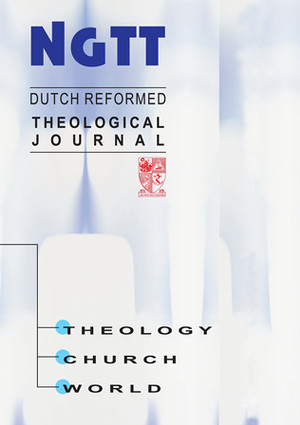Die narratologiese analise van randfigure: Die siekes as groepskarakter in die Johannes-evangelie
DOI:
https://doi.org/10.5952/54-1-2-321Keywords:
Gospel of John, narratological analysis, characterizationAbstract
The narratological analysis of background characters: The ill as group character in the Gospel according to JohnSince the first narratological/narrative critical studies of the Gospel of John were published several decades ago, much effort has been put into the analysis of characterization in this Gospel, and the value of such approaches has been proven. A survey of such studies indicates that scholars usually focus their narratological analyses on the main and minor characters in the Gospel. Thus far, background characters have not been considered from such a perspective. In this article this issue is addressed and an example of a narratological analysis of such a group of characters, namely the ill (John 5:2-3 and 6:2), is offered. Aspects that are considered include the classification of this group character, the settings within which it appears, and the role of the reader in its construction.
Downloads
Published
2013-08-23
How to Cite
Tolmie, D. F. (2013). Die narratologiese analise van randfigure: Die siekes as groepskarakter in die Johannes-evangelie. NGTT | Nederduitse Gereformeerde Teologiese Tydskrif, 54(1&2), 1–9. https://doi.org/10.5952/54-1-2-321
Issue
Section
Articles | Artikels
License
Copyright of all NGTT material belongs to the Pieter de Waal Neethling Trust (PDWN Trust). The PDWN Trust is a trust fund established in 1932 with the aim of promoting quality theological research and publications.
The PDWN Trust pledges to maintain a legitimate scholarly record of the author's work and to defend the author's article against plagiarism and copyright infringement.
The PDWN Trust is committed to full Open Source publishing. This means that all articles published in NGTT will gradually be made freely available online. Authors maintain the right to:
- Share and self-archive their work.
- Make printed copies of their article for educational use.
- Present their article at a meeting or conference and distribute printed copies of the article
- Adapt and expand their published journal article to make it suitable for their thesis or dissertation.
- Republish the article (ensuring that the original article is cited as published in NGTT).
For any questions or queries in this regard, please contact the Editor.


